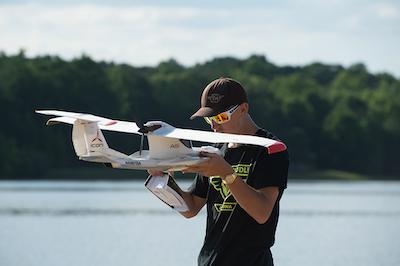Fri, Dec 27, 2019
Organization Presents Safety Data At A Safety Risk Management Panel In Washington, D.C.
EAA affirmed that legacy model aircraft can safely be integrated into the NAS — as they have been operated inside controlled airspace and near airports for decades without causing a safety risk to full-scale aircraft — in a Safety Risk Management panel (SRM) in Washington, D.C.

EAA vice president of advocacy and safety Sean Elliott represented EAA as a subject matter expert at the SRM panel, which sought to define recommendations towards a process/checklist for Air Traffic Control to integrate model aircraft operations and allow their operations at higher altitudes than the current LAANC facilities map currently allows.
It has long been EAA's belief that model aviation is a significant pathway to manned flight, and many EAA members came into general aviation through model aviation while many more continue to participate in both forms of flying.
Specifically, Elliott pointed out the true lack of risks associated with model aircraft operations taking place in proximity to various types of manned operations. Legacy model aircraft — such as traditional fixed-wing airplanes, gliders, and helicopter models — have operated in the National Airspace System for decades without posing a threat to manned flight.
"Legacy model aviation is a pathway and parallel to all aspects of manned flight, from professional pilots all the way down to grassroots activities such as the EAA community; our members participate in these forms of aviation in a lifelong capacity," Elliott said. "It's very important for the future of general aviation. EAA's role is to bring that viewpoint and help the modeling community continue to exist and be relevant into the next century."
EAA is supportive of safe integration of UAS and believes legacy model aviation should continue to exist as it has for more than 90 years.
(Image provided with EAA news release)
More News
Pilot Also Reported That Due To A Fuel Leak, The Auxiliary Fuel Tanks Were Not Used On June 4, 2025, at 13:41 eastern daylight time, a Piper PA-23, N2109P, was substantially damage>[...]
Have A Story That NEEDS To Be Featured On Aero-News? Here’s How To Submit A Story To Our Team Some of the greatest new stories ANN has ever covered have been submitted by our>[...]
From 2023 (YouTube Edition): Reflections on War’s Collective Lessons and Cyclical Nature The exigencies of war ought be colorblind. Inane social-constructs the likes of racis>[...]
Aero Linx: Colorado Pilots Association (CPA) Colorado Pilots Association was incorporated as a Colorado Nonprofit Corporation in 1972. It is a statewide organization with over 700 >[...]
High Speed Taxiway A long radius taxiway designed and provided with lighting or marking to define the path of aircraft, traveling at high speed (up to 60 knots), from the runway ce>[...]
 NTSB Prelim: Piper PA-23
NTSB Prelim: Piper PA-23 ANN FAQ: Submit a News Story!
ANN FAQ: Submit a News Story! Classic Aero-TV: One Mans Vietnam
Classic Aero-TV: One Mans Vietnam ANN's Daily Aero-Linx (07.03.25)
ANN's Daily Aero-Linx (07.03.25) ANN's Daily Aero-Term (07.03.25): High Speed Taxiway
ANN's Daily Aero-Term (07.03.25): High Speed Taxiway



